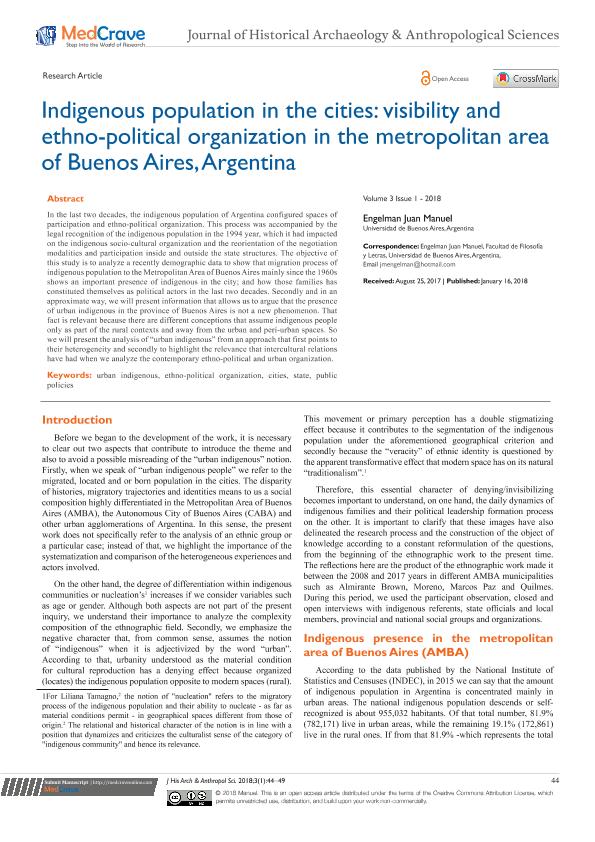Artículo
Indigenous population in the cities: visibility and ethno-political organization in the metropolitan area of Buenos Aires, Argentina
Fecha de publicación:
01/2018
Editorial:
MedCrave Group
Revista:
Journal of Historical Archaeology and Anthropological Sciences
ISSN:
2573-2897
Idioma:
Inglés
Tipo de recurso:
Artículo publicado
Clasificación temática:
Resumen
In the last two decades, the indigenous population of Argentina configured spaces of participation and ethno-political organization. This process was accompanied by the legal recognition of the indigenous population in the 1994 year, which it had impacted on the indigenous socio-cultural organization and the reorientation of the negotiation modalities and participation inside and outside the state structures. The objective of this study is to analyze a recently demographic data to show that migration process of indigenous population to the Metropolitan Area of Buenos Aires mainly since the 1960s shows an important presence of indigenous in the city; and how those families has constituted themselves as political actors in the last two decades. Secondly and in an approximate way, we will present information that allows us to argue that the presence of urban indigenous in the province of Buenos Aires is not a new phenomenon. That fact is relevant because there are different conceptions that assume indigenous people only as part of the rural contexts and away from the urban and peri-urban spaces. So we will present the analysis of “urban indigenous” from an approach that first points to their heterogeneity and secondly to highlight the relevance that intercultural relations have had when we analyze the contemporary ethno-political and urban organization.
Palabras clave:
URBAN INDIGENOUS
,
ETHNO-POLITICAL ORGANIZATION
,
STATE
,
PUBLIC POLICIES
Archivos asociados
Licencia
Identificadores
Colecciones
Articulos(SEDE CENTRAL)
Articulos de SEDE CENTRAL
Articulos de SEDE CENTRAL
Citación
Engelman, Juan Manuel; Indigenous population in the cities: visibility and ethno-political organization in the metropolitan area of Buenos Aires, Argentina; MedCrave Group; Journal of Historical Archaeology and Anthropological Sciences; 3; 1; 1-2018; 44-49
Compartir
Altmétricas




